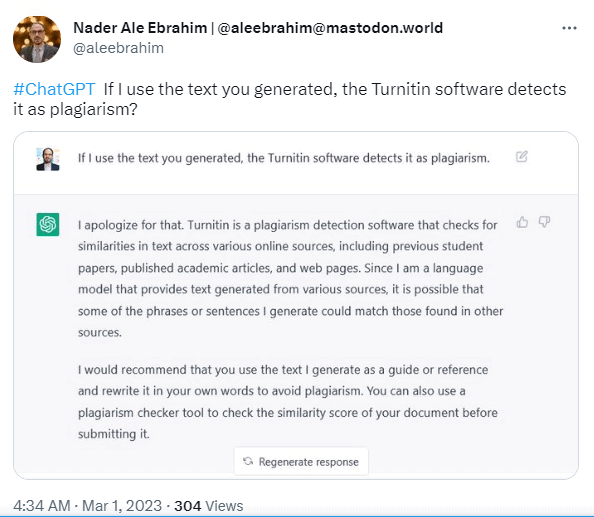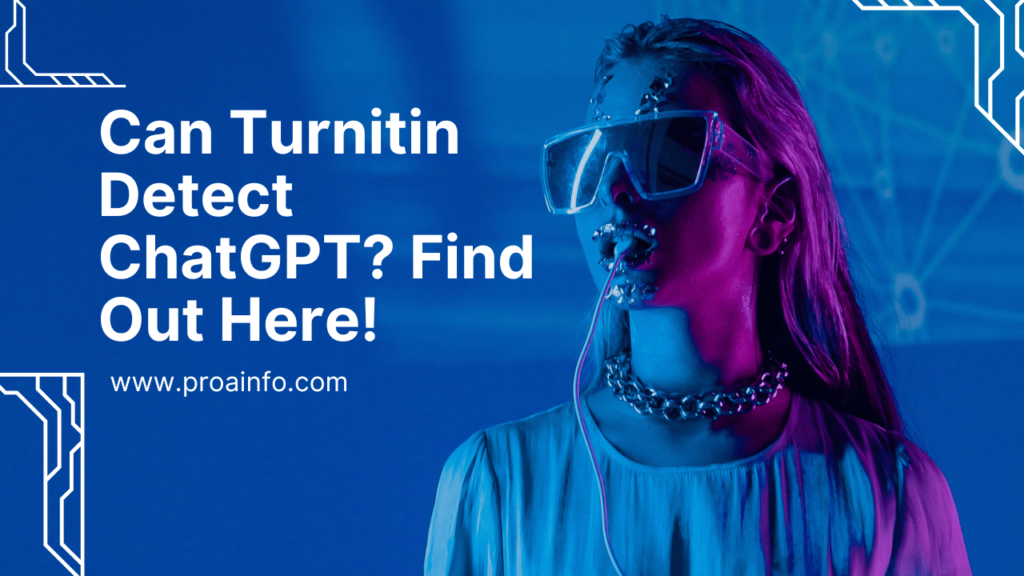The rise in the usage of ChatGPT in assisting or sometimes even cheating on school assignments has raised the need for strict monitoring. It is where plagiarism-detecting software like Turnitin comes into play!
Turnitin employs an advanced AI that compares how closely the student’s work resembles ChatGPT’s writing pattern (sentence length, structure, and word choice) to determine possible cheating in their assignment.
However, how much ChatGPT’s work Turnitin can detect remains an open question.
Read on to learn if Turnitin can detect ChatGPT and how the model works.
Can Turnitin Detect ChatGPT?
Did you know Turnitin is not a new technology and has been around for a while? Founded in 1998 as a plagiarism detection service, it sells licenses to educational institutions for its software. The software detects the submitted work against its contents database (books, websites, academic papers, newspapers, etc.) for possible plagiarism.
As a part of the process, students must submit their work to Turnitin, which then analyzes the content to detect the copied text. Are your wondering how?
It uses a sophisticated algorithm to identify exact matches and paraphrased content, sentence structures, and other indicators of potential plagiarism.
The Plagiarism Spectrum 2.0 introduced by Turnitin can detect 12 types of unoriginal work. The type of unoriginal work detected by Turnitin (Source: Turnitin). It generates a “similarity report” with percentile that any instructor can comprehend to review whether the student’s work is original or copied.
In fact, a popular website, plagiarism.org, is run by Turnitin, which different professionals use worldwide. However, it remains debatable how much it can detect AI-generated work like ChatGPT.
Watch the video to learn more about Turnitin,
How Does Turnitin Detect ChatGPT’s Work?
Turnitin claims to have technology that can detect AI-assisted writing and AI writing generated by technologies like ChatGPT.
However, it cannot directly differentiate between human work and AI-generated work. It is because Turnitin is a plagiarism-detecting software.
However, as claimed by Turnitin, they have tools to detect AI’s input by determining the use of specific phrases or sentence structures commonly found in AI-generated content.
The brand new AI Innovation Lab can successfully detect if a paragraph is written with a Chatbot such as ChatGPT. The detector has a stated 98% confidence level and is now available only to non-students and educational institutions.
Turnitin would model the words and syntax that AI usually adopts regarding sentence length, structure, word choices, accuracy, and consistency. Then it would compare the student’s work against AI’s to determine how much it resembles the latter’s work.
ChatGPT gave this response when we asked if Turnitin could detect its work.

Remember, AI-generated works are less likely to contain errors or inconsistencies commonly found in human-produced works. Moreover, the Turnitin detection tool has recently been released for general use as it is still under testing.
Here is a demonstration of Turnitin detecting the exact number of sentences in an essay created by an AI tool.
How To Stop Turnitin From Detecting Your AI Content?
Although not advised, one way to stop Turnitin from detecting your AI (ChatGPT’s) work is to make it more human-like. The more your content contains errors and inconsistencies, the more it becomes human-like.
Therefore, consider heavily paraphrasing the text that you get from ChatGPT by using a handy tool like Quillbot. Otherwise, consider editing the text to suit your personality, tone, colloquialisms, and context. However, we recommend creating original work to avoid the risk of getting caught altogether.
You use ChatGPT only for research to develop base ideas for your essays and articles.
Continue reading to learn how to bypass Turnitin AI detection.
Does Turnitin Have A Hidden Signature?
A hidden signature is a digital watermark applied to digital files, images, and documents. It provides a way to identify the owner of the digital work to prevent copying or publishing their work as someone else’s.
For now, the responses generated by ChatGPT do not contain a hidden signature. Therefore, Turnitin or any other detecting software will not be able to track the origin of the response or ChatGPT.

There are rumors that ChatGPT will soon implement a hidden signature on its works. However, it remains a big question whether it will implement a hidden signature in the near future.
The Bottom Line
No wonder AI tools like ChatGPT can help generate innovative ideas and save time. However, doing so may compromise your creativity and ethics due to a lack of originality and context. ChatGPT can be a helpful tool for generating work but should not be relied on solely.
Furthermore, tools like Turnitin may detect ChatGPT’s work successfully in the near future.
Continue reading to discover a few surprising benefits of ChatGPT and the best Turnitin alternatives.
Frequently Asked Questions
Can Turnitin Detect Paraphrasing?
Yes, Turnitin can quickly detect paraphrasing in an unoriginal work.
As reported by the website, Plagiarism Spectrum 2.0 can identify 12 different types of unoriginal work, including paraphrasing from any other source.
Do All Institutions Benefit From Using Turnitin?
Yes, the Turnitin software is licensed to schools, colleges, research institutes, and universities to assist instructors in detecting unoriginal work.
It encourages the adoption of a holistic approach to academic integrity.
What Are The Features Of Turnitin?
Along with addressing the unoriginality of student work, it helps grade paper-based assessments, detect sources, provide actionable feedback, and secure digital exams without internet connectivity.








35 thoughts on “Can Turnitin Detect ChatGPT? Find Out Here!”